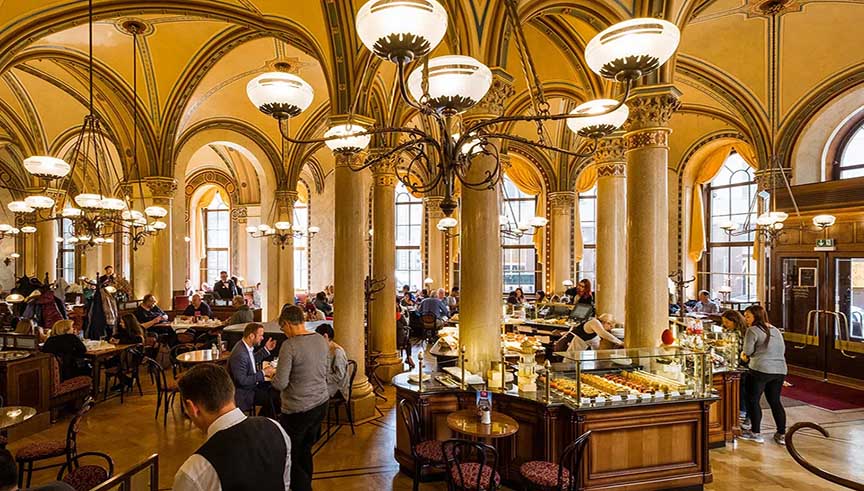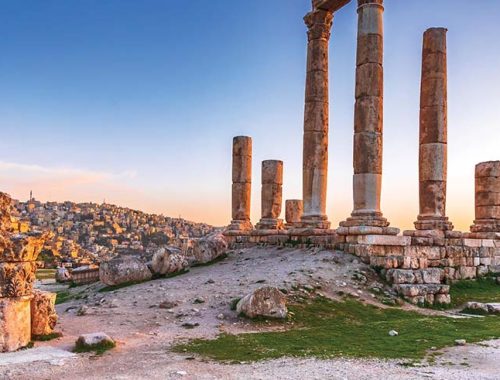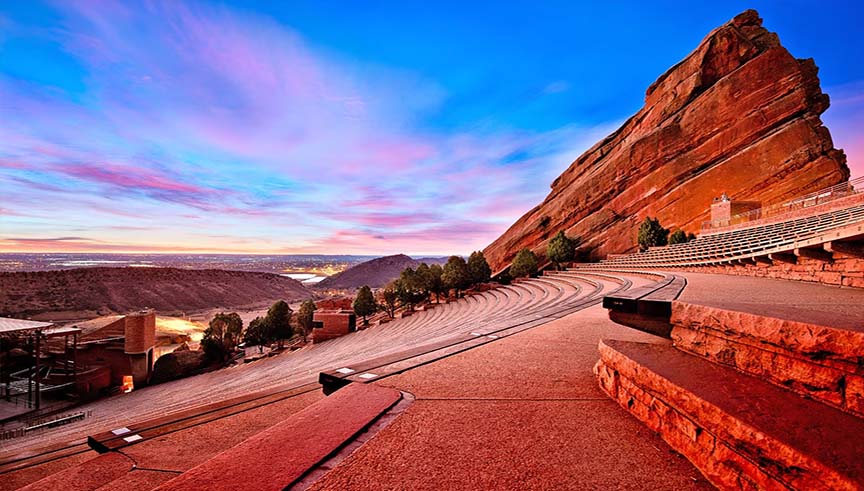
Savoring Austrian Coffee: From Classic Viennese Coffee to Modern Innovative Flavors
Austria, especially Vienna, is one of the world’s renowned coffee culture centers. Whether locals or visitors from around the world, nearly everyone can feel the deep cultural atmosphere in the coffeehouses. Austrian coffee is not just a drink but a symbol of art, culture, and history. I will take you into the world of Austrian coffee, from classic Viennese coffee to modern innovative flavors, and explore its unique charm.
I. The Historical Origins of Austrian Coffee Culture
1. The Origins of Coffee Culture
Austrian coffee culture has a long history, dating back to the 17th century. According to historical records, coffee entered Europe under the Ottoman Empire’s rule and quickly became popular. In 1663, the first Viennese coffeehouse opened in Vienna, marking the beginning of coffeehouse culture. At that time, coffeehouses were not just places to drink coffee but also important social spaces for gathering, discussing, and exchanging ideas.
According to some legends, the birth of Vienna’s coffeehouse culture is linked to a Polish merchant. This merchant, who was trapped in Vienna, began the coffee culture by using coffee beans sent by Turkish prisoners. Over time, coffee gradually became an integral part of Vienna’s social life, evolving into a venue for cultural, artistic, and political discussions.
2. The Cultural Significance of Coffeehouses
In Austria, especially Vienna, coffeehouses are not just places to drink coffee; they carry rich cultural and social meaning. Throughout history, many important literary figures, artists, philosophers, and politicians have spent time in Vienna’s coffeehouses. For example, Austrian writer Peter Handke and composer Beethoven were known to have drawn inspiration from the atmosphere of the city’s coffeehouses.
In Austria, coffeehouses are vital spaces for cultural exchange. People often discuss the latest literary works, art exhibitions, and even political affairs. Coffeehouses provide a peaceful and elegant environment where individuals can reflect deeply while enjoying delicious coffee, making them an essential place for intellectual and creative conversations.
II. Classic Viennese Coffee Varieties and Features
The charm of Viennese coffee lies not only in its history and culture but also in its diversity and unique flavors. Below are some of the classic Viennese coffee types and their characteristics:
1. Wiener Melange (Viennese Coffee)
Wiener Melange is one of the most iconic Austrian coffees. It resembles the French café au lait but has a distinct flavor. This coffee is made by combining a shot of strong espresso with an equal amount of hot milk, topped with a frothy milk foam. Often, it is sprinkled with cocoa powder or chocolate powder to enhance its sweetness.
The essence of Wiener Melange lies in its balance. The strong espresso, combined with the warmth of the milk foam, creates a perfect harmony of bitterness and sweetness. In Vienna, this coffee is an everyday part of life, and it’s offered in almost every coffeehouse.

2. Wiener Mokka (Viennese Mocha)
Wiener Mokka is another popular classic coffee in Vienna, focusing more on a strong coffee flavor. Similar to the Wiener Melange, it uses espresso as a base but without the milk foam. Instead, it adds more hot milk or cream, topped with chocolate powder and whipped cream.
Viennese Mocha offers a richer, more intense coffee flavor, especially suited for coffee lovers who prefer a strong taste. The addition of chocolate makes the drink even more flavorful, with layers of taste that are sure to delight. It is a popular choice in Vienna’s coffeehouses and a perfect winter drink.
3. Einspänner (Austrian Coffee)
Einspänner is a traditional Austrian coffee made with a shot of espresso, topped with a generous spoonful of whipped cream. Unlike other coffees, the cream is not mixed into the coffee but sits on top, creating a thick, creamy layer. This coffee not only looks tempting but also offers a rich and indulgent taste.
The name “Einspänner” comes from “one-horse carriage” in German, referring to the tradition of knights riding their horses to the coffeehouse to enjoy this cream-topped coffee.
III. Modern Innovative Austrian Coffees
As times have changed, Austrian coffee culture has incorporated modern innovations. Many coffeehouses now offer creative coffee drinks, combining traditional techniques with new flavors and trends. Below are a couple of representative modern innovative coffee drinks:
1. Wiener Eiskaffee (Viennese Iced Coffee)
Wiener Eiskaffee is a refreshing summer drink that differs from traditional iced coffee. Typically, it is made with espresso, vanilla ice cream, and whipped cream. The coffee and ice cream blend together, offering a rich coffee aroma and a creamy, smooth texture.
This iced coffee is particularly popular in the summer, especially in the street cafes of Vienna, where locals and visitors alike enjoy a cup while basking in the sunshine.
2. Specialty Coffee
With the rise of the specialty coffee culture, many coffeehouses in Vienna now focus on the selection of coffee beans and the precision of brewing methods. Specialty coffee is made from carefully chosen beans, brewed using various techniques like pour-over, cold brew with nitrogen, or espresso.
In some high-end coffeehouses, customers can choose from different types of coffee beans and select a brewing method based on their taste preferences. Whether it’s traditional drip coffee, cold brew, or espresso, specialty coffee showcases the unique flavors of coffee beans and offers a new level of coffee experience. These innovative coffee drinks not only highlight the diversity of coffee but also satisfy modern consumers’ demands for high-quality coffee.
IV. Recommended Coffeehouses in Austria
Austria, particularly Vienna, is home to some of the world’s most famous coffeehouses, which are not just places to enjoy coffee but also symbols of local culture and history. Here are a few classic Austrian coffeehouses you shouldn’t miss:

- Café Central
Located in the heart of Vienna, Café Central is one of the city’s most historically significant coffeehouses. Since its opening in 1876, it has been a gathering place for intellectuals and literary figures, including prominent names like Sigmund Freud, Peter Altenberg, and Leon Trotsky. The elegant decor, featuring high ceilings, grand chandeliers, and marble columns, alongside soft piano music, creates a charming atmosphere that transports you back in time. Whether you’re enjoying a classic Viennese coffee or savoring a traditional Sachertorte, Café Central provides an authentic cultural experience, combining rich history with a delightful café experience. It’s not just a coffeehouse but a symbol of Vienna’s literary and cultural heritage. The vibrant, bustling atmosphere offers a sense of timelessness, making it an unforgettable stop for anyone visiting Vienna. - Café Demel
Founded in 1786, Café Demel is one of Vienna’s most renowned coffeehouses and a symbol of local dessert culture. Famous for its Sachertorte, a decadent chocolate cake, and an assortment of exquisite pastries, Demel’s historic interior and aristocratic ambiance make it a must-visit. The regal setting, complete with its grand mirrors, elegant chandeliers, and refined decor, offers visitors a sense of sophistication. At Demel, you can enjoy authentic Austrian desserts while experiencing the charm of traditional coffee culture. The café’s patisserie is legendary, attracting both locals and tourists seeking the perfect slice of cake. Visitors can also enjoy a selection of Viennese coffee blends, from the traditional Wiener Melange to innovative creations. Café Demel is more than just a café; it’s a delightful journey into Vienna’s rich culinary and cultural traditions. - Café Hofburg
Situated next to the Hofburg Palace, Café Hofburg is known for its royal atmosphere and exquisite service. The coffee is rich and smooth, with a wide variety of desserts, including seasonal delicacies and Austrian specialties. It’s the perfect place for an afternoon tea or coffee break, offering a refined escape from the city’s hustle and bustle. The classic decor, adorned with elegant furnishings and historical elements, mirrors the majestic surroundings of the palace. Guests can enjoy a relaxing coffee experience while taking in the regal ambiance. The café is an ideal location for a leisurely afternoon, whether you’re indulging in a traditional piece of Sachertorte or sipping on a well-crafted espresso. Its proximity to the Hofburg Palace also makes it a convenient stop for visitors exploring the area’s historic landmarks. Café Hofburg blends Vienna’s imperial past with its modern coffee culture, creating a unique and memorable experience. - Café Klemm
For a quieter, more local coffeehouse experience, Café Klemm is a great choice. Located in a charming part of Vienna, the café offers a cozy and modern environment, featuring a warm, welcoming atmosphere and contemporary decor. Offering a range of specialty coffees brewed to perfection, Café Klemm takes pride in its high-quality coffee beans and careful brewing techniques. The café also serves an array of fresh local desserts, such as buttery pastries and chocolate treats, providing the perfect complement to your coffee. The artistic vibe of Café Klemm is enhanced by the local artwork adorning its walls, making it a perfect place for a peaceful coffee break or a reading session. Its intimate size and relaxed setting make it a favorite among those seeking a more low-key yet equally enjoyable coffee experience. With its blend of modernity and tradition, Café Klemm is a true gem for coffee enthusiasts and art lovers alike.
Austria’s coffee culture is distinct, reflecting the history, traditions, and pursuit of a good life. From classic Viennese coffee to modern innovations, every cup of coffee carries the cultural imprint of Austria. If you have the chance to visit Vienna, make sure to savor an authentic Viennese coffee in one of its iconic coffeehouses and experience the depth of its rich coffee culture.
You May Also Like

A Historical Odyssey: Sydney’s Oldest Structures and Timeless Landmarks
28/11/2023
Red Rock Park: Spectacular Rock Formations and Outdoor Adventures
26/08/2023

